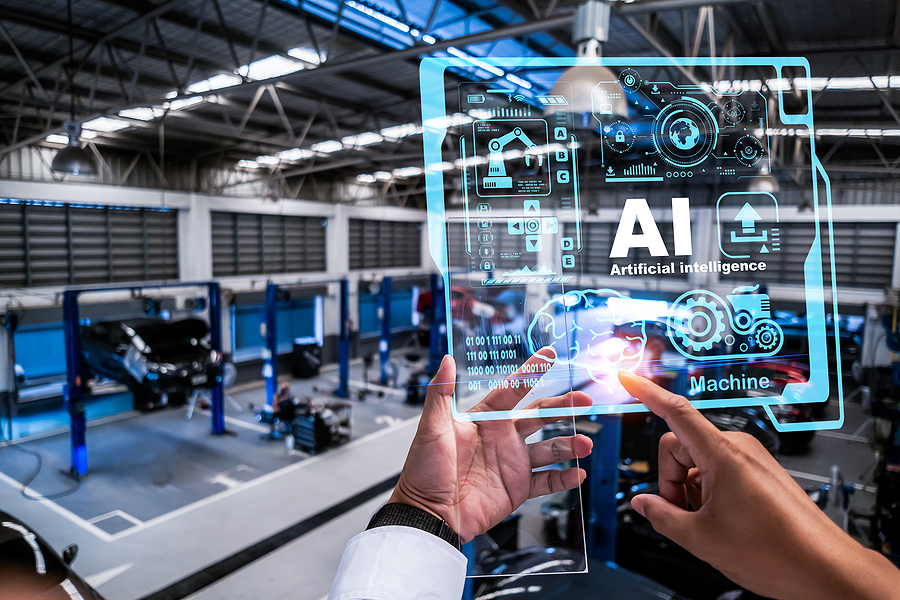The Role of AI in Revolutionizing Quality Inspection Processes in Manufacturing
As you navigate the rapidly evolving manufacturing landscape, you’re likely aware of quality inspection’s critical role in ensuring product excellence. However, traditional inspection methods can be time-consuming, costly, and prone to human error. Enter artificial intelligence (AI), a game-changing technology revolutionizing industry quality control processes. By harnessing the power of machine learning algorithms and computer vision, AI transforms how you detect defects, streamline operations, maintain consistency in your production lines, and optimize quality with Lincode AI’s Software. In this article, we’ll explore the groundbreaking ways AI reshapes quality inspection and how you can leverage this technology to stay ahead in today’s competitive manufacturing environment.
The Limitations of Traditional Quality Inspection Methods
Traditional quality inspection methods have long been the backbone of manufacturing processes. However, they have inherent limitations that can hinder efficiency and accuracy. These shortcomings become more apparent as industries evolve, highlighting the need for advanced solutions like quality inspection software.
Human Error and Inconsistency
One of the primary drawbacks of traditional inspection methods is their reliance on human operators. Despite training and experience, human inspectors are susceptible to fatigue, distractions, and subjective interpretations. This can lead to inconsistent results and overlooked defects, potentially compromising product quality and customer satisfaction.
Time and Resource Intensity
Manual inspection processes are often time-consuming and labor-intensive. As production volumes increase, the demand for more inspectors grows, leading to higher operational costs. This approach can create bottlenecks in the production line, slowing overall manufacturing efficiency and limiting a company’s ability to scale.
Limited Scope and Depth
Traditional methods may struggle to detect subtle or complex defects, especially in products with intricate designs or those requiring microscopic precision. Furthermore, these techniques often focus on surface-level issues, potentially missing internal flaws that could affect product performance or longevity.
By recognizing these limitations, manufacturers can better appreciate the transformative potential of AI-driven inspection software in overcoming these challenges and revolutionizing their quality control processes.
How AI-Powered Quality Inspection Software Transforms Manufacturing
Integrating artificial intelligence into manufacturing quality control offers numerous advantages, including the potential to revolutionize traditional inspection methods. Companies that leverage AI-powered quality inspection software can significantly enhance their production processes and output.
Improved Accuracy and Consistency
Quality inspection software powered by AI algorithms can detect defects with remarkable precision, often surpassing human capabilities. These systems analyze products at microscopic levels, identifying flaws that might escape the naked eye. By maintaining consistent inspection criteria, AI eliminates human error and fatigue-related oversights, ensuring uniform quality standards across production runs.
Real-time Monitoring and Feedback
AI-driven inspection systems provide real-time data on production quality, allowing manufacturers to address issues promptly. This immediate feedback loop enables quick adjustments to manufacturing processes, minimizing defective output and optimizing resource utilization. The software can also predict potential quality issues based on historical data, enabling proactive maintenance and reducing downtime.
Cost Reduction and Resource Optimization
AI-powered quality inspection software significantly reduces labor costs and inspection time by automating the inspection process. This efficiency boost allows manufacturers to increase production speeds without compromising quality. Moreover, reducing defective products and waste translates to substantial cost savings and improved sustainability in manufacturing operations.
Increased Efficiency and Speed
Quality inspection software powered by AI can process vast amounts of data in real-time, dramatically reducing the inspection time required. This increased speed allows for higher production volumes without sacrificing quality control standards. Additionally, AI systems can work continuously without fatigue, boosting overall productivity.
Implementing AI-Driven Quality Inspection: Best Practices and Considerations
Assessing Your Current Process
Before implementing AI-driven quality inspection, evaluate your existing processes. Identify bottlenecks, error-prone areas, and manual tasks that could benefit from automation. This assessment will help you determine where AI can impact most.
Choosing the Right Quality Inspection Software
Selecting appropriate quality inspection software is crucial for successful implementation. Look for solutions that offer:
- Integration capabilities with your existing systems
- Scalability to grow with your needs
- User-friendly interfaces for easy adoption
- Robust data analytics and reporting features
Consider partnering with vendors who offer tailored solutions and ongoing support.
Training and Change Management
Implementing AI-driven quality inspection requires a shift in mindset and skills. Invest in comprehensive training programs for your staff to ensure smooth adoption. Address concerns about job security and emphasize how AI will augment human capabilities rather than replace them.
Continuous Improvement and Monitoring
AI-driven quality inspection is not a one-time implementation. Establish a system for continuous monitoring and improvement. Analyze the data generated by your AI system regularly to identify trends, refine algorithms, and optimize processes. This ongoing commitment will help you maximize the benefits of AI in your quality inspection workflows.
Final Thoughts
As you optimize quality with Lincode AI’s Software in your manufacturing processes, you’ll unlock new levels of efficiency, accuracy, and consistency. You can detect defects earlier by leveraging machine learning algorithms, computer vision, and predictive analytics, reduce waste, and optimize production. The initial investment may seem daunting, but the long-term benefits in cost savings, improved product quality, and enhanced customer satisfaction far outweigh the upfront expenses. Embracing AI technology is no longer optional but essential for maintaining a competitive edge in today’s rapidly evolving manufacturing landscape. The future of quality inspection is here – it’s time to adapt and thrive in the AI-driven era of manufacturing excellence.
Stay in touch to get more updates & news on Verified Zine!





